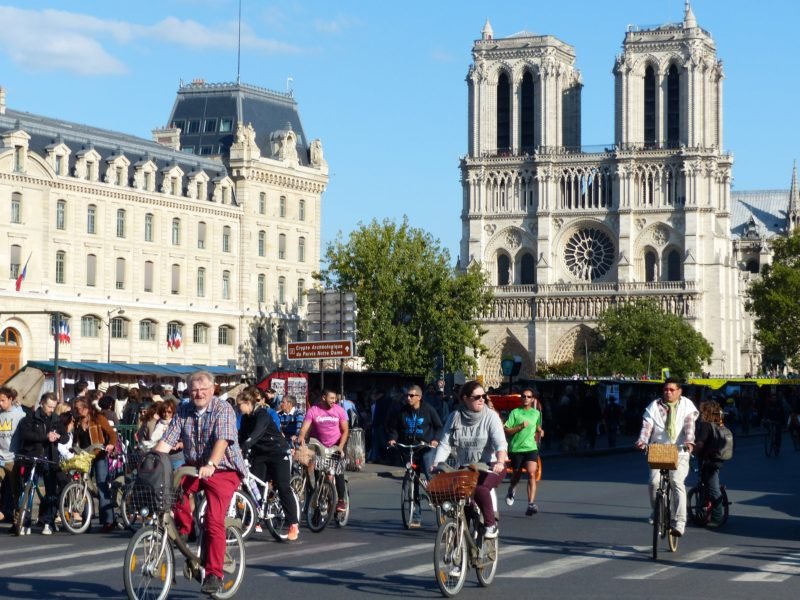Eno, The Black Dog And The Airport
This is the first time I will discuss music on this blog. But it’s relevant, and yes, of course we love music. Especially the music that is written, mixed or composed to perfectly capture the atmosphere of a situation in a physical environment — the city.
A good example and one of my all time favorites is Studio Pankow’s 2005 album ‘Linienbusse’, a collaborative masterpiece of three musicians (David Moufang, Jamie Hodge and Kai Kroker) that can be considered a true tribute to Berlin. All tracks are named after streets, parks and squares in the German capital and make the late night listener feel like being in a dark night club filled with bleeps, dub scapes and bubbly bass lines produced by steamy machines. Huge recommendation.

From this perspective I’d like to discuss two albums of which one re-gains relevance due to the release of the other. The first album is Brian Eno’s famous ambient piece ‘Music for Airports’, which was recorded in 1978. (Click here to listen to some samples!) The second album is The Black Dog’s contemporary reply ‘Music for Real Airports’ (click the link for samples), which is scheduled for release next month on Soma Records. ‘Music for Real Airports’ proves that atmospherical music can be loaded with a political message. Field recordings accompanied by drones and pure electronics take the listener on a trip through Airport City. When listening to both albums and trying to make a comparison, you can conclude that, whether it’s caused by the ‘Zeitgeist’ or not, the airport of today is perceived a lot different than in the seventies. Click here for a full size review elaborating on how Eno himself considered his 1978 ambient album to be.
“Airports are the modern point of departure and they are places where reunions occur and separations begin as people move back and forth. Airports are also places of duty-free commerce, blaring announcements, boredom and tension. So he took all of this into considerations: a work that would reassure people who might possibly be flying to their fiery death, that would give a spirit of hope and trepidation and calm all mixed together.”
Especially the word ‘hope’ embodies optimism and the need for progression, and this is what is noticeable when listening to Eno’s friendly and peaceful pieces of ambient music. The following video is a short movie by Rodrigo J. Lopez which is meant to be an architectural film about a new international airport. The video’s description emphasizes the role of the airport to host the full range of human emotions: “from a farewell to loved ones, the happiness of seeing a familiar face, or the excitement and anticipation of new experiences in distant lands”. No wonder that one of Eno’s tracks on ‘Music for Airports’ was used in the video. It’s rather beautiful emotions. Not fear, not anger. The video focuses totally on hard structures and elements made of glass and concrete and it almost seems to forget the airport to be not some piece of clean architecture, but rather a place to be used by millions of people.
Something different then. The deep drones and dub techno of The Black Dog’s ‘Music for Real Airports’, which are fantastic but oppressive at the same time, make a totally different statement. Gridface explains that, in contrast to Brian Eno’s album, “this is music about a space rather than for it”. It captures the spectrum of emotions stirred by the airport. “Many of the compositions were created while waiting in airports, which makes for some uneasy listening.” At the album website, the members of The Black Dog state:
“Airports have some of the glossiest surfaces in modern culture, but the fear underneath remains. Hence this record is not a utilitarian accompaniment to airports, in the sense of reinforcing the false utopia and fake idealism of air travel. Unlike Eno’s ‘Music for Airports’, this is not a record to be used by airport authorities to lull their customers.”

Below is a preview video of The Black Dog’s ‘Music for Real Airports’ made by the artists of Sheffield-based interactive agency Human. The Black Dog considers ‘Music for Real Airports’ to be a more accurate update to Eno’s work and musically represents Airport City as a dystopian microcosm a possible future society. Describing airports as promising travel, exploration and excitement, but endlessly breaking that promise with their stale, tedious pressure, the perfect contradiction is made. Enjoy.
The two albums are not just two different approaches to the airport, they represent an erosion of modernist thinking. Over the last decades airports became large multinational businesses — even big cities, but without any inhabitants. In his book In the Bubble: Designing in a Complex World, John Thackara explains how powerful commercial and network operation agendas drive the way both space and time are designed. He argues that the penetration of system-based design into public space desensitizes bodies from their sense of time. Thackara refers to Richard Sennett’s earlier writings on this issue:
“When public space becomes a derivative of movement, it loses any independent experiential meaning of its own. On the most physical level these environments of pure movement prompt people to think of the public domain as meaningless (…) catatonical space.”
It’s interesting that The Black Dog took the effort to provide a contemporary update to Eno’s work. The relation between the two albums is the relation between seventies optimism and millennium negativism, between futurism and technological determinism. The Black Dog’s ‘Music for Real Airports’ shows how the airport itself has changed since Eno released his album in the late seventies. I wonder how Eno’s album would sound like when he would have produced it today.



